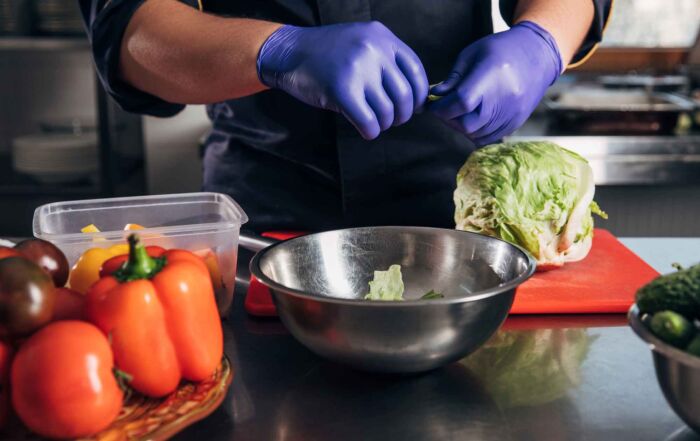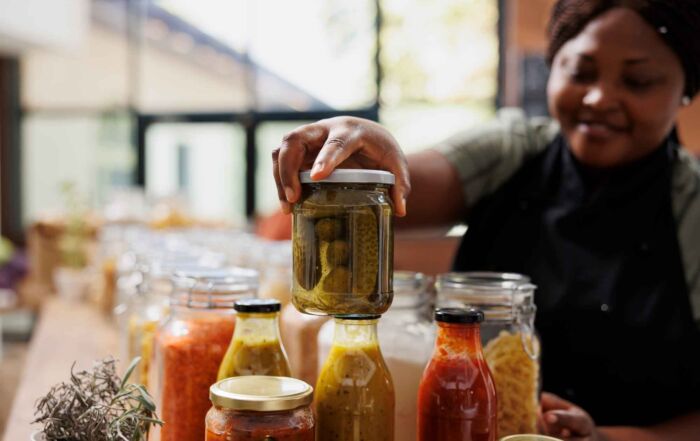Tis the Season!
Tis the Season!
Here it is January, so I bet you all think I have lost my mind! Hanukkah is over, Christmas is over, and the New Year has been rung in—so what in the world? Well, it is cold and flu season—and NOROVIRUS season. While norovirus can occur anytime, the incidence goes up dramatically between late October and April. So, it is important to brush up on norovirus in order to control it in your operation.
Norovirus is a common virus that causes diarrhea, vomiting, nausea, stomach pain, headaches, and body aches. Often people think they have the “flu” when it is really norovirus. It is so common that it accounts for more than half of the known cases of foodborne illness outbreaks.
It is important to know that norovirus spreads very easily and quickly and is quite virulent. Norovirus can be spread by tiny particles of feces or vomit from an infected person. It can be transmitted by direct contact with the person but it can also be transmitted indirectly. For example, an infected person who has not washed hands properly can touch a door handle or stair rail. You come behind them (even much later!) and grab the handle or railing, then you put your fingers to your mouth–and voila, the virus has been passed to you! Then in 1-2 days you are feeling the symptoms of norovirus!
This is just one example of how easily norovirus spreads. Other ways you can contract it include:
- Eating or drinking something that is contaminated
- Having direct contact with a person who is infected with norovirus
- Having contact with surfaces that have been infected by droplets of a vomiting incident—droplets can be spread up to 25 feet contaminating surfaces, food, and supplies.
Now you can understand why the outbreaks of norovirus on cruise ships are so large and difficult to contain. There are a huge number of people in a fairly confined space and norovirus spreads quickly. Our goal is always to prevent the spread of norovirus. How do we do that? Here are a few simple, but critical, steps that you can take in your operation:
- Be sticklers for following good hand hygiene practices. That means using the proper techniques for handwashing every time hands should be washed. Keeping fingernails short and scrubbing under them can be important, too. Norovirus can be in feces for two weeks or more after a person starts to feel better—and it can be trapped under the nails. Remember, it only takes a very small amount of the virus to make someone ill!
- Wear gloves after handwashing as an added layer of protection. The food code requires that gloves should be worn (or another barrier used) for handling all ready-to-eat foods.
- Use care when washing fruits and vegetables. These foods will not be cooked, so there is no kill-step to destroy the virus.
- Cook foods thoroughly. Norovirus can survive temperatures as high as 145o Use your thermometers to monitor that correct cooking temperatures are reached.
- Prohibit sick employees from handling foods. Make sure you have good employee health standard operating procedures. Employees should report if they have vomiting, diarrhea, jaundice, sore throat with fever, or infected cuts and burns with pus on their hands and wrists. While you may be short-handed if someone calls in sick, it is the best decision in the long run!
- Clean, clean, clean! We always need to be finicky about cleaning and sanitizing—that is important whatever the season. If you have a vomiting incident, clean-up is critical but it is very different than our routine procedures. I will talk about how to do norovirus clean-up in the next blog—so stay tuned!
Norovirus is miserable for individuals, and can be devastating for any foodservice operation. There are plenty of examples of recent norovirus outbreaks so it can and does happen. Use these guidelines to reduce the opportunity for an outbreak to happen in your operation. Risk nothing!
Related Resources: Handwashing Video
Glove Use Videos
Signage
READ MORE POSTS
Chilling Out: A Quick Guide to Thawing Food in Foodservice
Thawing food and cooling food are two challenges we face daily in foodservice operations. Regardless [...]
Recommitting to Food Safety in 2025, One Meal at a Time
The start of a new year is a great time to cast aside old habits and [...]
Why Canning in Foodservice Really Isn’t a Good Way to Preserve Fresh Produce
Canning has long been a trusted method for preserving fresh produce, offering a way to extend [...]
Managing Food Safety During the Foodservice Holiday Rush
The holiday season is a time of increased activity and demand in foodservice operations, from catering [...]











